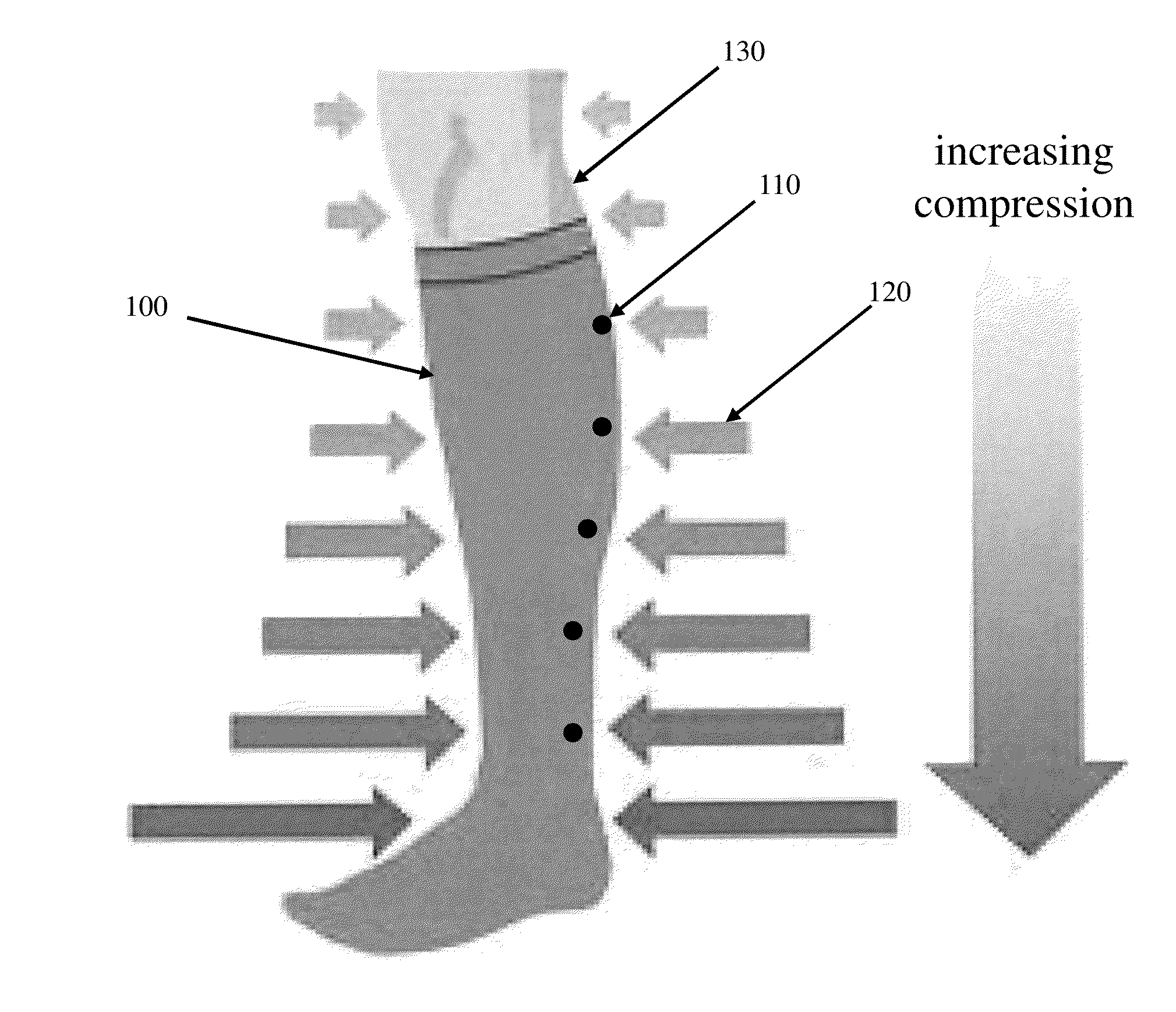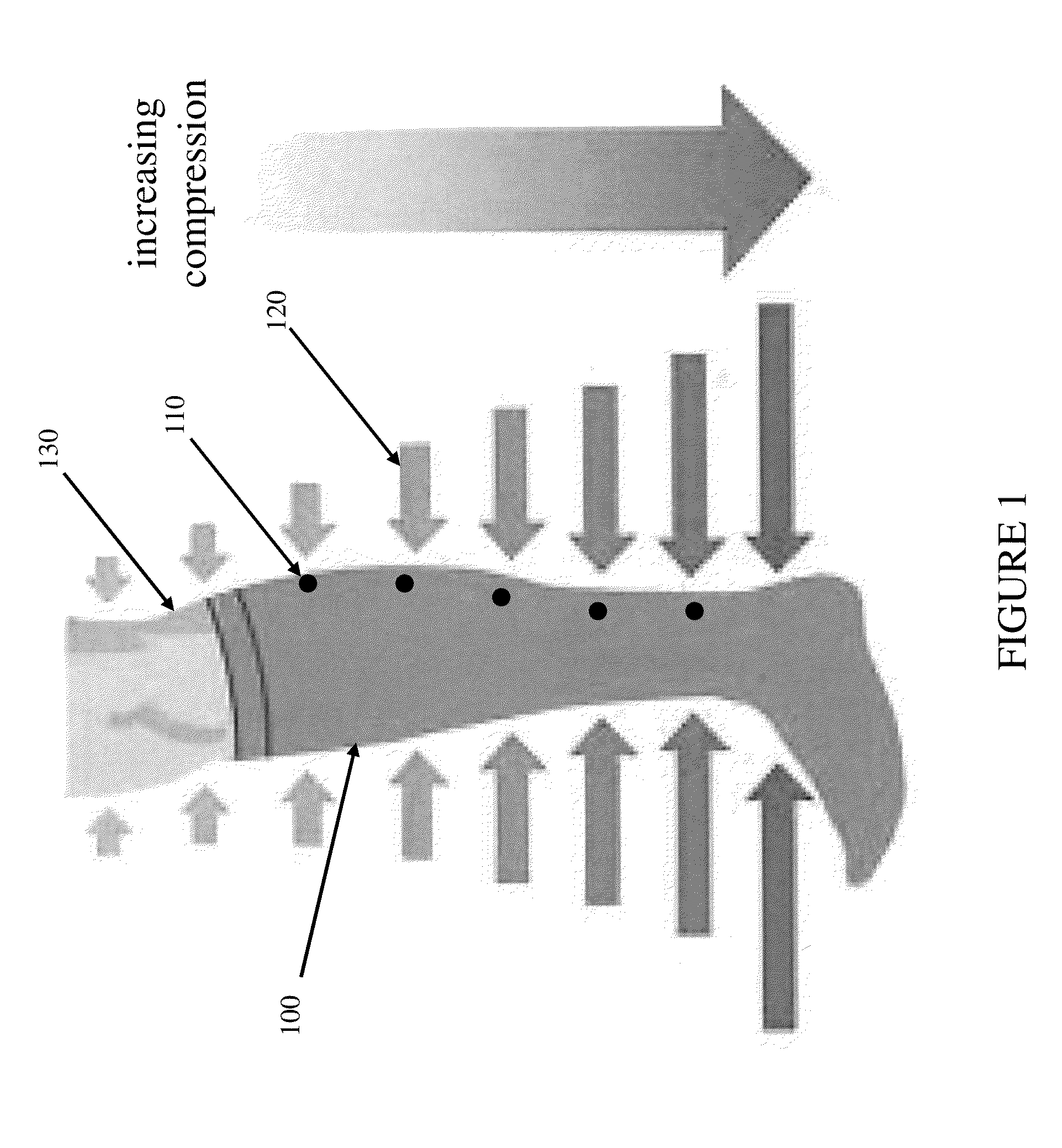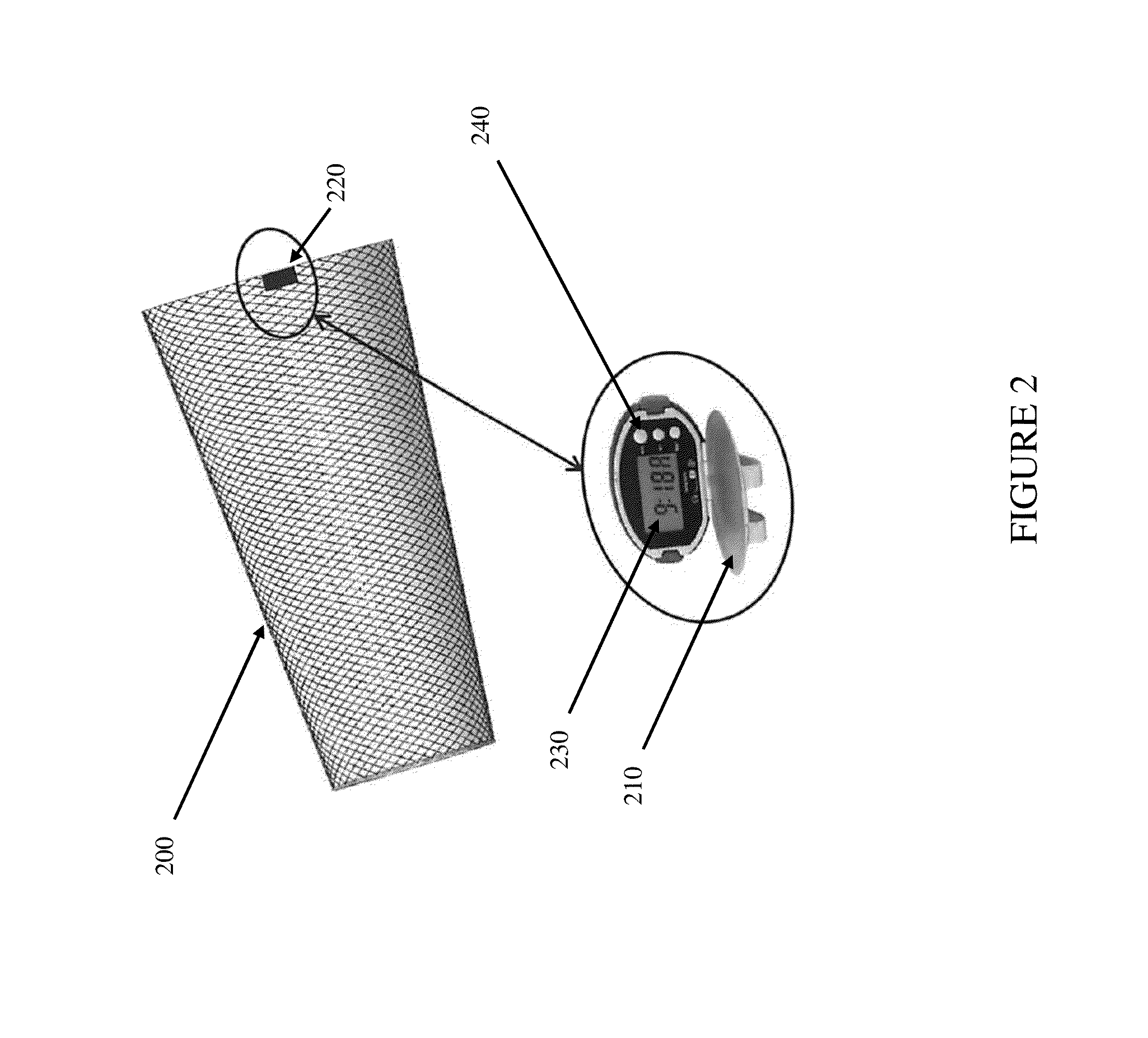Compression garment and method of forming the same
a compression garment and compression technology, applied in the field of compression garments, can solve the problems of insufficient venous drainage in the patient's extremities, inability to verify the pressure produced and maintained by the compression garment over time, and the useful life of conventional compression garments is often shor
- Summary
- Abstract
- Description
- Claims
- Application Information
AI Technical Summary
Benefits of technology
Problems solved by technology
Method used
Image
Examples
Embodiment Construction
[0020]The making and usage of the present exemplary embodiments are discussed in detail below. It should be appreciated, however, that the embodiments provide many applicable inventive concepts that can be embodied in a wide variety of specific contexts. The specific embodiments discussed are merely illustrative of specific ways to make and use the systems, subsystems and modules associated with a process for producing a compression garment.
[0021]An observation was made that a patient standing in water such as a swimming pool experiences an advantageous and well controlled gradient of hydrostatic pressure about the patient's lower extremities (e.g., legs) that promotes venous drainage. In particular, a pressure gradient is produced by the surrounding water from a lower portion of the extremity to a higher portion that substantially balances the ordinary internal pressure gradient of fluids that is induced in the extremity by gravity. A consequence of this observation is that a compr...
PUM
 Login to view more
Login to view more Abstract
Description
Claims
Application Information
 Login to view more
Login to view more - R&D Engineer
- R&D Manager
- IP Professional
- Industry Leading Data Capabilities
- Powerful AI technology
- Patent DNA Extraction
Browse by: Latest US Patents, China's latest patents, Technical Efficacy Thesaurus, Application Domain, Technology Topic.
© 2024 PatSnap. All rights reserved.Legal|Privacy policy|Modern Slavery Act Transparency Statement|Sitemap



